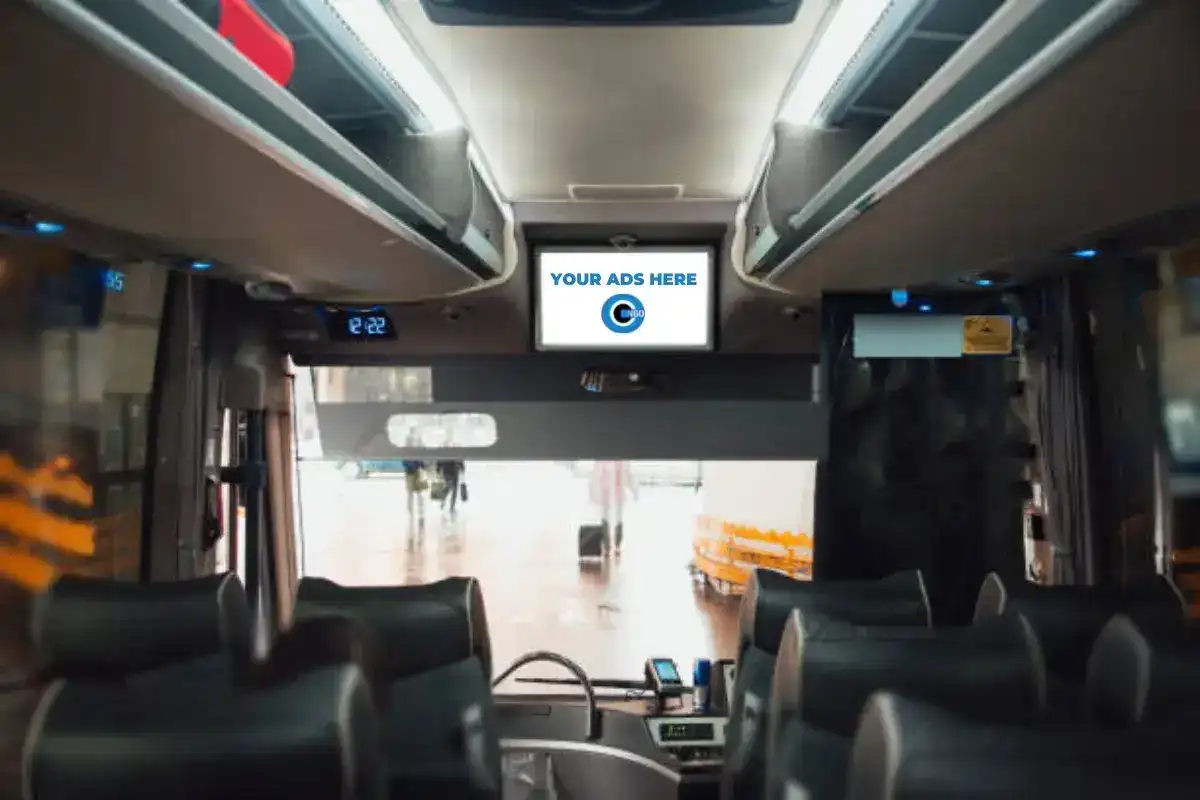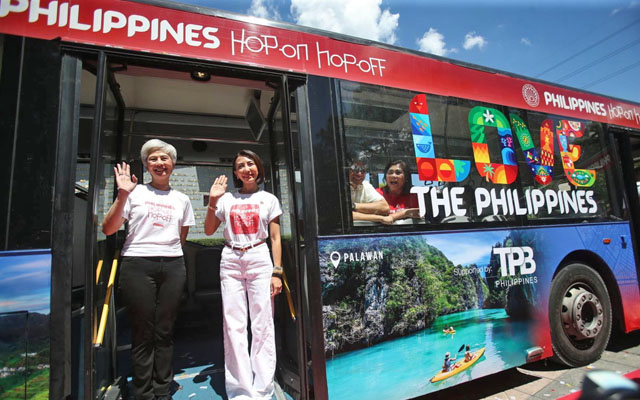Inexpensive Transit Advertising Philippines for Brand Awareness
Inexpensive Transit Advertising Philippines for Brand Awareness
Blog Article
Exactly How Transportation Advertising And Marketing Can Change Mass Transit Spaces Into Dynamic Advertising Operatings Systems
Transit marketing holds considerable capacity to redefine mass transit spaces right into lively marketing platforms that inform and engage. By making use of cutting-edge layouts such as interactive kiosks and electronic display screens, brands can not only reach a diverse target market however also boost the overall traveler experience. This method creates a distinct possibility for brand names to get in touch with consumers in a setup that is commonly overlooked. As we explore the multifaceted benefits and progressing techniques of transportation marketing, it elevates the inquiry of how this transformation can redefine our communications with both brand names and the urban atmosphere.
Benefits of Transportation Advertising And Marketing

Furthermore, transportation advertising is extremely cost-efficient compared to typical media. It permits advertisers to attain high impacts at reduced costs, taking full advantage of roi. The captive target market of travelers provides a chance for brand names to share their messages to individuals that are usually responsive throughout their traveling times.
In addition, the dynamic nature of transportation advertising and marketing permits projects to be updated frequently, making sure that messaging stays timely and pertinent. This adaptability can be crucial in reacting to market trends or advertising events, keeping the brand top-of-mind for customers. Lastly, the prevalent existence of transit marketing adds to brand recall; repeated direct exposure within familiar travel contexts strengthens brand recognition and cultivates customer loyalty, eventually boosting and driving sales brand credibility.
Kinds Of Transit Marketing
Public transport systems give different styles for advertising and marketing, each accommodating different marketing techniques and audience involvement methods. One prominent kind is external bus and train covers, which cover the whole vehicle and develop a mobile signboard effect, permitting high presence in metropolitan atmospheres. These wraps can capture attention as they traverse hectic streets, getting to a varied audience.
An additional preferred format is interior advertising, that includes posters, electronic displays, and ads on transportation seats. These placements involve guests throughout their journey, reinforcing brand messaging in a restricted area. Digital shows, in particular, offer the advantage of vibrant material, allowing advertisers to update messages in real-time.
Station marketing is likewise substantial, featuring posters, banners, and interactive stands within transportation stations. These ads leverage foot web traffic and can target particular demographics based on location.
Last but not least, marketing partnerships with transportation authorities can result in unique projects, such as themed transit experiences or occasions, enhancing the general engagement with commuters. Each kind of transit advertising and marketing uses distinct benefits, permitting brands to customize their approach to successfully reach their target audience within the general public transport environment.
Engaging Travelers Effectively
Commuters are significantly swamped with advertising and marketing messages during their day-to-day travels, making it vital for brand names to involve them in ingenious ways. To catch interest in this congested area, advertisers should focus on creativity and relevance. Making use of captivating visuals and succinct messaging can substantially boost the possibility of interaction.
Interactive aspects, such as QR codes or increased fact attributes, can find out this here also transform fixed advertisements into immersive experiences, cultivating a deeper connection with the audience. Brands should concentrate on attending to travelers' passions and demands, customizing messages to reverberate with their way of living, whether via promotions for local businesses or services designed to enhance their commuting experience.
Moreover, timing plays an essential role; strategically putting advertisements throughout height travelling hours can make the most of visibility and effect. Engaging travelers successfully additionally includes leveraging social networks assimilation, permitting guests to share their experiences or promotions directly from transportation platforms, thus magnifying brand name reach.
Basically, effective interaction depends upon comprehending the commuter journey and developing engaging, interactive, and appropriate marketing experiences that not only capture attention however additionally drive activity and loyalty. By doing so, brands can transform mass transit into a vibrant marketing platform that reverberates with its audience.

Measuring Marketing Impact
Just how can brands accurately examine the efficiency of their ad campaign in transit settings? Determining the influence of transit advertising calls for a multifaceted strategy that incorporates qualitative and measurable metrics. One common method is tracking interaction via mobile analytics, where brands can assess foot web traffic patterns and app interactions in the past, during, and after projects.
Studies can supply valuable understandings into brand name recall and consumer belief, permitting brands to assess just how well their messages resonate with travelers. In addition, keeping an eye on social media interaction pertaining to specific campaigns can expose changes in public perception and brand discussion.

In addition, collaborating with transit agencies can improve measurement accuracy, as they commonly have thorough demographic data on ridership trends. By integrating these approaches, brands can establish a thorough understanding of their advertising and marketing effectiveness, making sure that their projects not just reach but likewise affect their target audiences properly.
Future Fads en route Marketing
A significant change is prepared for en route advertising as technological innovations and altering consumer habits improve the landscape. Transit Advertising Philippines. The integration of digital screens and multimedias is anticipated to my response improve interaction, permitting brand names to deliver vibrant web content that resonates with diverse audiences. As mass transit systems welcome wise innovation, marketers will certainly take advantage of real-time information why not find out more analytics to customize messages based upon traveler demographics and habits
Furthermore, boosted fact (AR) is poised to reinvent the way commuters connect with advertisements. By providing immersive experiences, AR can change an ordinary journey into an appealing story that captures focus and fosters brand name loyalty. This development will likely encourage marketers to create more experiential campaigns that drive customer interaction.
Sustainability is an additional critical trend influencing transportation marketing. As ecological awareness expands, brands will significantly seek to straighten with environmentally friendly methods, utilizing sustainable products and advertising green initiatives within their projects.
Verdict
Finally, transit advertising uses substantial benefits by enhancing brand exposure and engaging a captive audience. Through various styles, such as exterior covers and digital screens, it transforms public transport into a dynamic advertising and marketing platform. Efficient engagement techniques and robust measurement strategies even more amplify its influence. As trends progress, the possibility for ingenious communications between commuters and brand names is positioned to expand, making sure that transit advertising and marketing continues to be an essential element of contemporary advertising and marketing methods.
Transportation marketing holds significant capacity to redefine public transport spaces into dynamic marketing platforms that engage and educate. The pervasive existence of transportation advertising adds to brand recall; duplicated exposure within familiar travel contexts reinforces brand name recognition and promotes consumer loyalty, ultimately driving sales and enhancing brand track record.
Just how can brand names accurately examine the performance of their marketing projects in transportation settings?In verdict, transit marketing uses considerable advantages by improving brand name exposure and involving a captive audience. Transit Advertising Philippines. As trends progress, the potential for innovative interactions in between commuters and brands is positioned to expand, guaranteeing that transportation advertising and marketing remains an essential element of modern advertising and marketing methods
Report this page